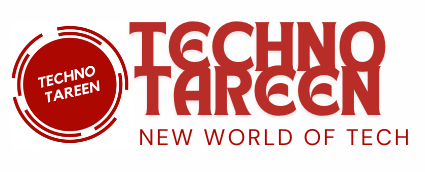Digital Marketing
How to start online marketing?
Introduction to Online Marketing
In the rapidly evolving digital age, online marketing has become a crucial strategy for businesses of all sizes. Whether you’re an entrepreneur launching a startup or a seasoned business owner looking to expand your reach, online marketing offers a wealth of opportunities to connect with potential customers and grow your brand. This comprehensive guide will explore the essentials of starting an online marketing journey, from understanding its significance to practical steps for implementation.
Understanding Online Marketing
Online marketing, also known as digital marketing, refers to the practice of promoting products or services using digital channels such as search engines, social media, email, and websites. Unlike traditional marketing methods, online marketing allows businesses to target specific audiences, measure results in real-time, and adapt strategies quickly.
Key Components of Online Marketing:
- Search Engine Optimization (SEO): SEO involves optimizing your website and content to rank higher in search engine results pages (SERPs). Higher rankings lead to increased visibility and organic traffic.
- Content Marketing: Content marketing focuses on creating valuable, relevant content to attract and engage your target audience. This can include blog posts, videos, infographics, and more.
- Social Media Marketing: Social media platforms like Facebook, Instagram, Twitter, and LinkedIn offer businesses a way to connect with their audience, share content, and promote products or services.
- Email Marketing: Email marketing involves sending targeted messages to a list of subscribers. It’s an effective way to nurture leads, build relationships, and drive conversions.
- Pay-Per-Click (PPC) Advertising: PPC advertising allows businesses to place ads on search engines and other platforms, paying only when someone clicks on the ad. Google Ads is one of the most popular PPC platforms.
- Affiliate Marketing: In affiliate marketing, businesses partner with affiliates who promote their products or services in exchange for a commission on sales generated.
- Influencer Marketing: Influencer marketing involves collaborating with influencers—individuals with a large following on social media—to promote your products or services.
- Analytics and Data Analysis: Monitoring and analyzing data is essential to understanding the effectiveness of your online marketing efforts. Tools like Google Analytics provide insights into website traffic, user behavior, and conversion rates.
Why Online Marketing is Essential
Online marketing offers numerous advantages over traditional marketing methods:
- Cost-Effective: Online marketing is often more affordable than traditional marketing. Small businesses can reach a large audience with a limited budget.
- Measurable Results: Digital marketing tools provide detailed analytics, allowing you to track the success of your campaigns in real-time. This data-driven approach enables you to make informed decisions and optimize your strategies.
- Targeted Audience: Online marketing allows you to target specific demographics, interests, and behaviors, ensuring that your message reaches the right people.
- Global Reach: The internet connects businesses to a global audience. With the right strategy, you can reach potential customers anywhere in the world.
- Adaptability: Online marketing strategies can be quickly adjusted based on performance data, allowing you to respond to market changes and consumer preferences.
Steps to Start Online Marketing
Starting an online marketing campaign requires careful planning and execution. Here’s a step-by-step guide to help you get started:
1. Define Your Goals
Before diving into online marketing, it’s crucial to establish clear goals. What do you want to achieve? Common goals include:
- Brand Awareness: Increasing the visibility of your brand.
- Lead Generation: Attracting potential customers and collecting their contact information.
- Sales: Driving sales of your products or services.
- Customer Retention: Keeping existing customers engaged and loyal.
Your goals will guide your marketing strategy and help you measure success.
2. Identify Your Target Audience
Understanding your target audience is key to successful online marketing. Create detailed buyer personas that represent your ideal customers. Consider factors like:
- Demographics: Age, gender, location, income, education level.
- Psychographics: Interests, values, lifestyle, behavior.
- Pain Points: Challenges or problems your audience faces.
- Buying Behavior: How and when they make purchasing decisions.
By identifying your target audience, you can tailor your marketing efforts to resonate with them.
3. Build a Professional Website
Your website is the foundation of your online presence. It’s often the first point of contact between you and potential customers, so it should be professional, user-friendly, and optimized for search engines.
Key elements of a professional website:
- Clear Navigation: Ensure visitors can easily find the information they’re looking for.
- Mobile Responsiveness: Your website should work seamlessly on all devices, including smartphones and tablets.
- Fast Loading Speed: A slow website can drive visitors away. Optimize images and use efficient coding practices to improve loading times.
- Compelling Content: Provide valuable information that addresses your audience’s needs and encourages them to take action.
- Call-to-Action (CTA): Include clear CTAs that guide visitors toward your desired outcome, whether it’s signing up for a newsletter, making a purchase, or contacting you.
4. Develop a Content Marketing Strategy
Content is at the heart of online marketing. A well-thought-out content marketing strategy can attract, engage, and convert your target audience.
Steps to develop a content marketing strategy:
- Set Clear Objectives: Define what you want to achieve with your content, such as increasing website traffic, generating leads, or improving SEO.
- Create High-Quality Content: Focus on producing content that provides value to your audience. This can include blog posts, videos, podcasts, infographics, and more.
- Optimize for SEO: Use keyword research to identify topics your audience is searching for, and incorporate these keywords into your content. Ensure your content is well-structured and easy to read.
- Promote Your Content: Share your content on social media, email newsletters, and other platforms to increase its reach.
- Measure and Refine: Use analytics tools to track the performance of your content and make data-driven decisions to improve future content.
5. Leverage Social Media Marketing
Social media platforms offer powerful tools for connecting with your audience and promoting your brand. Each platform has its unique features and audience, so choose the ones that align with your goals and target audience.
Steps to leverage social media marketing:
- Choose the Right Platforms: Focus on platforms where your target audience is most active. For example, Instagram is popular among younger audiences, while LinkedIn is ideal for B2B marketing.
- Create Engaging Content: Share a mix of content, including promotional posts, educational content, and interactive elements like polls or quizzes.
- Engage with Your Audience: Respond to comments, messages, and mentions to build relationships and foster community engagement.
- Use Paid Advertising: Social media platforms offer targeted advertising options that allow you to reach specific demographics. Experiment with paid ads to boost your reach.
- Monitor and Analyze: Use platform analytics to track engagement, follower growth, and other key metrics. Adjust your strategy based on what’s working.
6. Implement Email Marketing
Email marketing remains one of the most effective online marketing strategies. It allows you to nurture leads, build relationships, and drive conversions.
Steps to implement email marketing:
- Build an Email List: Offer something of value, such as a free ebook, discount, or newsletter, in exchange for visitors’ email addresses.
- Segment Your List: Divide your email list into segments based on factors like demographics, interests, and behavior. This allows you to send targeted messages that resonate with each group.
- Create Compelling Emails: Write engaging subject lines and provide valuable content in your emails. Include CTAs that encourage recipients to take the next step.
- Automate Your Campaigns: Use email marketing software to automate follow-up emails, welcome series, and other campaigns. This ensures consistent communication with your audience.
- Track Performance: Monitor open rates, click-through rates, and conversions to evaluate the effectiveness of your email campaigns.
7. Explore Paid Advertising
While organic strategies like SEO and content marketing are essential, paid advertising can accelerate your online marketing efforts by driving immediate traffic and conversions.
Types of paid advertising:
- Search Engine Advertising: Platforms like Google Ads allow you to bid on keywords and display ads at the top of search results. This is particularly effective for driving targeted traffic.
- Display Advertising: Display ads appear on websites across the internet. They can be targeted based on demographics, interests, or behavior.
- Social Media Advertising: Paid ads on platforms like Facebook, Instagram, and LinkedIn can help you reach specific audiences with tailored messages.
- Retargeting Ads: These ads target users who have previously visited your website, encouraging them to return and complete an action, such as making a purchase.
Steps to start with paid advertising:
- Set a Budget: Determine how much you’re willing to spend on paid ads. Start with a modest budget and gradually increase it as you see positive results.
- Define Your Audience: Use the targeting options available on ad platforms to reach the right audience. Consider factors like location, age, interests, and behavior.
- Create Compelling Ads: Design eye-catching ads with clear messaging and a strong CTA. Test different variations to see what works best.
- Monitor and Optimize: Track the performance of your ads using metrics like click-through rate (CTR), conversion rate, and return on ad spend (ROAS). Make adjustments to improve results over time.
8. Monitor and Analyze Results
Successful online marketing requires continuous monitoring and analysis. By regularly reviewing your performance, you can identify what’s working, what’s not, and where to focus your efforts.
Key metrics to track:
- Website Traffic: Monitor the number of visitors to your website, where they come from, and which pages they visit.
- Conversion Rate: Track the percentage of visitors who take

